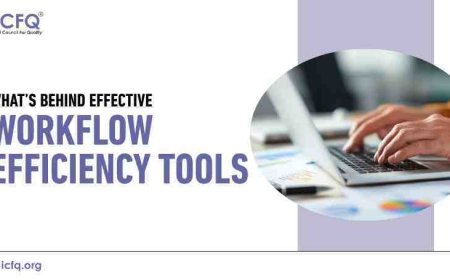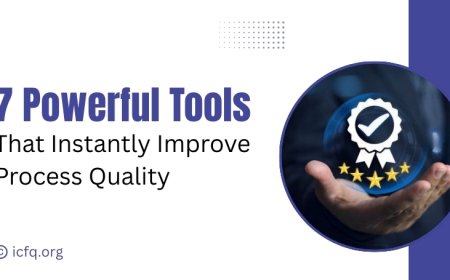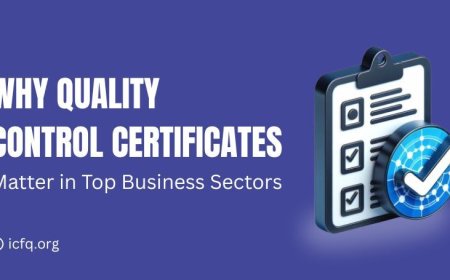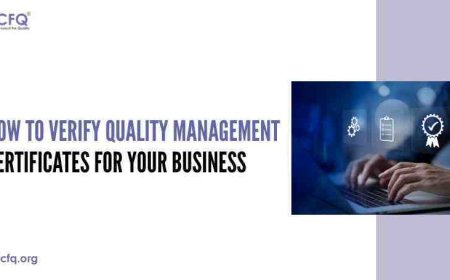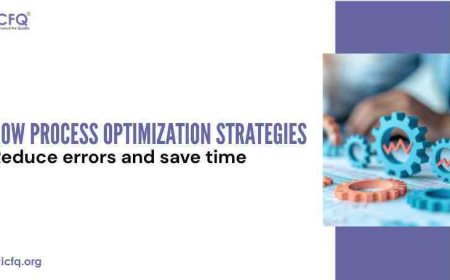Techniques for Lean Six Sigma Certification
Discover effective techniques for Lean Six Sigma Certification. Master Lean principles and Six Sigma methodologies for successful certification.
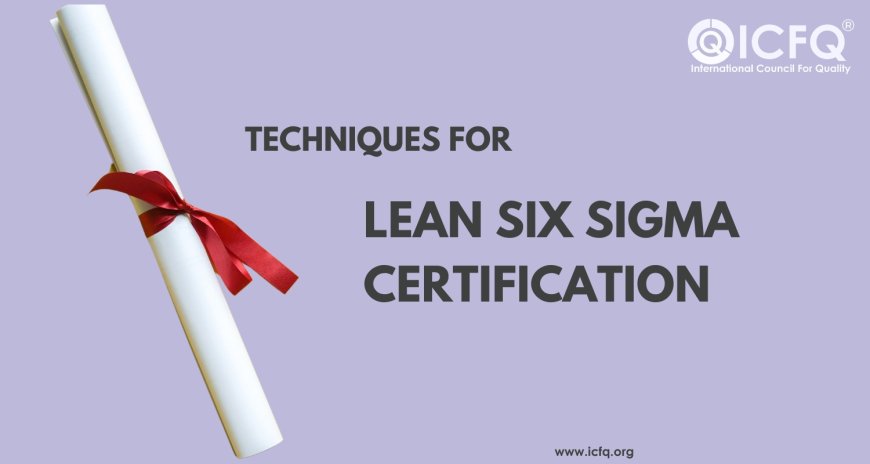
Lean Six Sigma Certification gives you a clear way to improve processes, helping organizations cut down on mistakes and perform better. By blending in Lean principles, which focus on getting rid of waste and giving customers more value, this methodology becomes even more powerful. Six Sigma courses come in different levels, so whether you're just starting and want to learn the basics with a Six Sigma Yellow Belt training, or you're aiming for the advanced skills of a Six Sigma Black Belt certification, there's a course for you.
Thanks to online platforms, getting Six Sigma training is easier than ever. Online Lean Six Sigma courses let you learn interactively, and you can go at your own pace, which is great for busy professionals. From Green Belt to Master Black Belt, there's a Six Sigma program for every career stage. By taking Six Sigma classes, people equip themselves with the skills and know-how to keep making things better and better, and to help their organizations shine. Look at the key methods and strategies for getting Lean Six Sigma Certification, so you can become an expert in making processes work better and managing quality effectively.
Mastering Lean Six Sigma Certification: Overcoming Learning Plateaus
When you start learning about Lean Six Sigma, you might hit points where it feels like you're not making progress, no matter how hard you try. These are called learning plateaus. Whether you're going for the Six Sigma Certification Yellow Belt or aiming higher, getting past these plateaus is important if you want to become good at it. One big problem is that Lean Six Sigma has lots of complicated steps. As you work through things like DMAIC (Define, Measure, Analyze, Improve, Control) or DMADV (Define, Measure, Analyze, Design, Verify), you might struggle with tricky math or figuring out how to apply Lean ideas. That's where having someone experienced to guide you or taking special Lean Six Sigma certification courses can help.
Also, there are resources out there, like free materials for Six Sigma Yellow Belt certification, that can help you strengthen what you already know and fill in any gaps in your understanding. Using tools and training that are easy to get to helps you keep learning and move past those plateaus. But getting Lean Six Sigma Certification isn't just about learning stuff from books. It's also about putting that knowledge to work in real situations. Doing projects and working with other people on Lean Six Sigma stuff gives you really important experience and helps you get better when you feel like you're stuck.
So, when you're trying to get Lean Six Sigma Certification, you need to keep going even when it's tough. Use all the resources you can find, get help from someone who knows what they're doing, and get as much real-world experience as possible. That way, you can get past those tough points and become good at Lean Six Sigma Certification.
Balancing Priorities and Commitments: The Challenges You Face
Balancing priorities and commitments can feel like walking through a minefield. Making a wrong move can cause a lot of problems. Nowadays, we all have a lot on our plates, from work deadlines to family responsibilities. But while trying to handle everything, there are a bunch of complications that can trip you up, even if you're good at multitasking.
Here are some of the main problems you might run into when trying to balance your priorities and commitments:
1. Time Management Trouble: There are only so many hours in a day, so it's crucial to manage your time well. But when you have lots of things to do, it's easy to feel like you're always in a rush, leaving you stressed and struggling to use your time wisely.
2. Feeling Stuck Making Decisions: When you have a bunch of stuff to do, it can be hard to figure out what's most important. This can make it tough to get anything done because you're stuck trying to decide where to start.
3. Deciding Between Quality and Quantity: Balancing your priorities means finding the right balance between doing things well and getting lots of things done. Whether it's doing a great job on one task or finishing a bunch of tasks on time, it's hard to find the right balance without sacrificing one or the other.
4. Dealing with Stress and Burnout: Trying to keep up with everything can take a toll on your mental and physical health. You might end up feeling stressed out and burned out, which can be bad for both your personal life and your work.
5. Strained Relationships: Trying to balance everything can put a strain on your relationships with friends and family. You might feel guilty or resentful because you're always busy, which can make it hard to connect with the people you care about.
6. Missing Out on Professional Growth: When you're busy trying to do everything, it can be hard to find time for things like getting a Lean Six Sigma Certification. But skipping out on growth opportunities can hold you back in your career.
7. Losing Focus and Productivity: Jumping between different tasks all the time can make it hard to stay focused and get things done. This can make you less efficient and make the quality of your work suffer.
Balancing your priorities and commitments might seem tough, but it's doable. By recognizing the challenges and finding ways to deal with them, you can navigate through everything more smoothly, Lean Six Sigma Certification and all.
What are the best ways to get certified in Lean Six Sigma?
To get certified in Lean Six Sigma, it's best to combine hands-on experience with learning the theory. Start by working on real projects in your workplace where you can apply Lean Six Sigma methods. This helps you understand how it works in practice. Then, take formal training courses that cover things like statistics, improving processes, and managing projects. These courses give you a good foundation for certification. Also, join online groups and forums where you can learn from others who are also studying Lean Six Sigma. Their experiences can give you helpful tips and tricks for your certification journey.
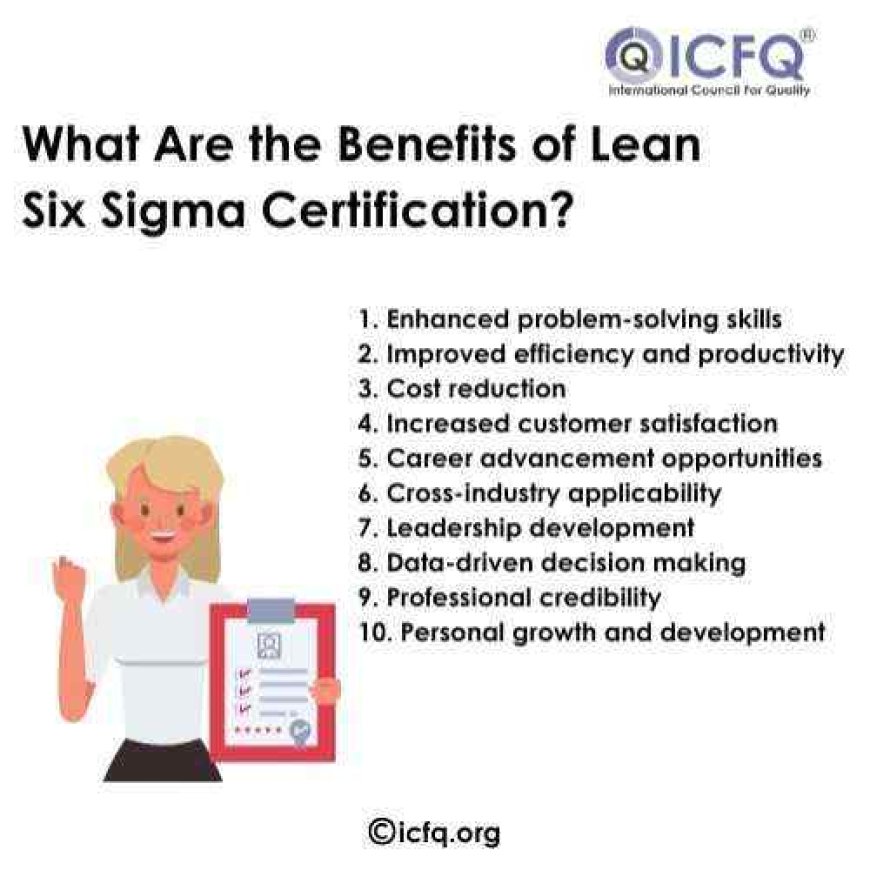
Tips for Succeeding in Lean Six Sigma Certification
Getting Lean Six Sigma Certification is like going on a journey where you learn how to make things better in a smart way. Here are some simple tips to help you succeed:
1. Know What Lean Six Sigma Is About: Before you start, understand what Lean Six Sigma is all about. Learn about things like DMAIC (Define, Measure, Analyze, Improve, Control) and the tools used to make processes better.
2. Find the Right Training: Look for a good training program that fits your style and schedule. Make sure it's from a trusted place like ICFQ so your certification is recognized everywhere.
3. Keep Learning: Lean Six Sigma is always changing, so keep learning. Join discussions, watch webinars, and attend workshops to learn new things and meet people who can help you.
4. Practice What You Learn: Look for chances to use Lean Six Sigma in real projects. This helps you understand it better and shows you can make a difference.
5. Manage Your Time Well: Balancing work, study, and life is important. Make a schedule for studying and stick to it.
6. Use Resources Smartly: There are lots of books, online courses, and practice tests out there. Use them to help you learn. ICFQ has good resources too.
7. Get Help When You Need It: Connect with people who know Lean Six Sigma well. They can give you advice and support when things get tough.
By following these tips and using resources like those from ICFQ, you can do well in Lean Six Sigma Certification. Remember, it takes dedication and hard work, but it's worth it in the end.
So, becoming a Lean Six Sigma pro isn't just about getting a fancy certificate. It's more like going on a journey to make your workplace better and grow yourself too. You learn how to do things more efficiently, cut out waste, and always find ways to do things better. Getting certified shows you're serious about making things top-notch, fixing problems, and making things run smoothly. And when you get certified, you're not just saying you know stuff—you're showing you can make a real difference in your job. You'll be able to improve how things work, make your company better, and encourage everyone to keep coming up with new ideas. In a world where things are always changing and competition is tough, having Lean Six Sigma skills is like having a superpower for making things work better.





